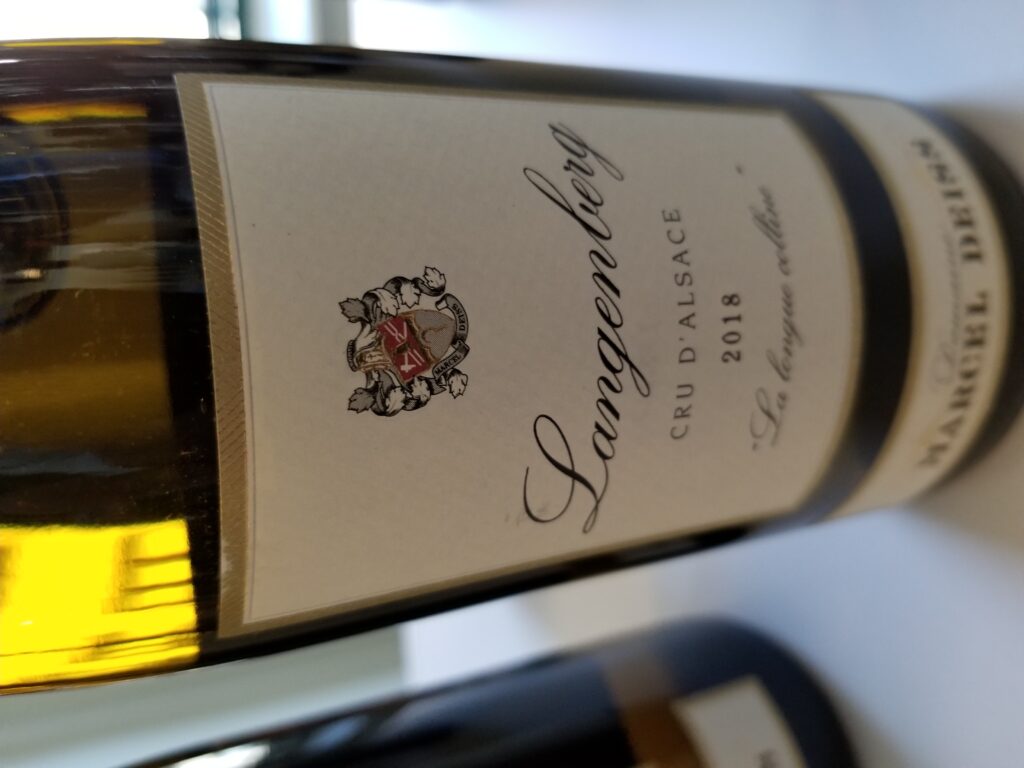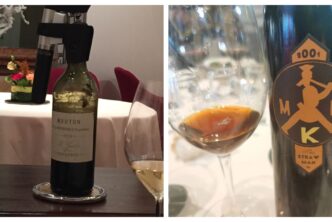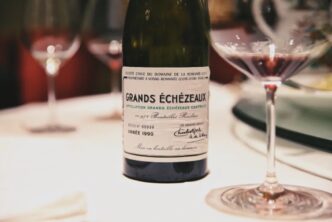Chateau Musar 1990 Beeka Valley Lebanon 93

Chateau Musar is not only the most famous wine made in Lebanon, but it is the most well-known wine from that country. This singular animal has fascinated tasters since the wines became familiar to drinkers in the 1980s. I say singular because it is so difficult to compare Musar to red wines from elsewhere. It is only fair to add that bottle-to-bottle variability has been the rule for Musar reds until recently. This has only contributed to the allure of the wine: when Musar is good it can be extraordinary in its own aromatic, elegant manner. Do you end up opening a good or a not so good example? That is the question.
I am pleased to report that I tasted a flawless bottle of the 1990 with friends recently. The history of Musar is as interesting as the wine: The vines were planted 1930 by the 20-year-old Gaston Hochar. It will of be of interest to readers to know that wine making has a 6000-year history in Lebanon, well before Greece and Italy to say nothing of relatively new-comer, France! Gaston was befriended by Roland Barton of Chateau Langoa Barton in the early 1940s when he was stationed in Lebanon during World War II. It was Gaston’s son Serge who transformed Chateau Musar into world class wine after his studies with the famous Emile Peynaud in Bordeaux. The wine is a blend of three varietals: Cabernet Sauvignon, Cinsault and Carignan. The vineyards are planted at a roughly 900 meters elevation. They see 300 days each year of sunshine, nights are as cool as days are warm, and the soil is mostly granite over a limestone bed. The juice sees a long fermentation followed by six months in concrete vats before being transformed to a mix of new and older Bordeaux barrels for a year. The blending of the three grapes is then done, and the blend transferred back into concrete for six months. The wines are not released for sale until 7 years after the vintage. The wine is never filtered or fined. As the website points out, and all experienced tasters know, Chateau Musar throws a lot of sentiment.
Now to the wine: Musar is very difficult to compare with wines from other regions. It has a perfumed delicacy which might remind tasters od older styled Barolos and Riojas. The 1990 is highly aromatic with a bouquet of rose petals, iron fillings, fading strawberries in a delicately piercing manner which brought me back to inhaling the wine over and over. I will admit that I find bouquet often the most intriguing aspect of a wine. The word tertiary is frequently used to describe older Barolos and Bordeaux when time has caused changes which can make the wine seem to have arrived at its full potential. If ever there was red wine meant to reach the tertiary stage it is Chateau Musar. On the palate the wine dances, flows and animates the palate with delicacy yet wonderful persistence. The 13.5% alcohol is simply imperceptible. We drank this beauty over two hours with no deterioration whatsoever, and my guess is it will do just fine for another five to six years in a good cellar. I will add that we opened a bottle of the 1991 after the 1990. It had nowhere near the same expressivity and elegance as the 1990—proving the vintage matters as much in the Bekka Valley in Lebanon as it does in Bordeaux and Barolo.
Domaine Marcel Deiss 2018 Langenberg Alsace 92+

I had the opportunity to taste through an extensive line up of the wines from Marcel Deiss recently. I fact I tasted then twice over two days. On the second taste through I realized that I had simply missed the virtues of one of the Deiss “cru” wines— the Langenberg. Just to summarize the Deiss way for those who may not have tasted his quite special wines: Many years ago, Jean-Michel Diess, Marcel’s sons, began studying the way wines were made in Alsace in the 19th century. He discovered that many estates co-fermented all of the varietals growing in their sites. Strict separation into varietals—Riesling, Pinot Gris, Gewurztraminer. Muscat etc., was not nth norm at all. The wines hence forth were bottled under the name of the vineyard site with a back label indicating the grapes in the blend. Deiss regards these as true “Terroir” wines. The totality and individuality of the site is best expressed in the togetherness of all the grapes growing successfully in that site. The quality of the Deiss terroir wines has been and remains exceptional. Getting consumers to both understand and accept this strictly “Terroir” approach has not been so easy. In my view, all those concerns and trepidations are immediately put to rest with one sip. As you tasted through this marvelous sequence of terroir wines you will find some more personally appealing than other—as is only natural. One of these terroir beauties, the Grasberg is all but irresistible. The site is magnificent, the skill in the wine making impeccable, the aroma and taste heavenly.
But that is not the wine I am bring to your attention. In my second go around I realized that I had all but missed one of the deepest and most serious of these terroir wines: The Langenberg. On retasting I noticed that the wine finished with a wonderful note of tannin which gives the wine a density and seriousness worthy of a red wine. It turns out that the three Pinots—Noir, Beurot and Gris play a significant role on the final blend (there’s also a little Riesling and Muscat among the co-planted vines). The south facing site in St. Hippolyte sits on shallow granite soil. This lovely town is about 4.5 miles north of Ribeauville and historically is well known for its high-quality red wines—made from Pinot Noir. While not the sexiest or the most extroverted of the Deiss terroir wines, it shows just how deep and soulful white wines made from the Pinot grapes can be. This is a wine that grows on the taster—my favorite kinds of wine. If Grasberg is the Hare, the Langenberg is the Tortoise in the race for palate satisfaction. I am going to quote from Ian D’Agata’s review of the 2017 which I read after I tasted the wine a 2nd time: “Much more dense and longer than any of Deiss’s Appellation Villages wines, but less spicy and more saline than is usual for a wine made from mostly granite soils.” Notes of wild mushroom, smoke and dark berries coupled with citrus tones and as always with Deiss uplifting acidity are part of the wine’s deep attraction. Drinking window: 2022-2028

 English
English

